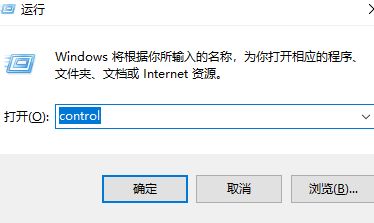 Operation and Maintenance
Operation and Maintenance Windows Operation and Maintenance
Windows Operation and Maintenance What is the difference between IPv4 and IPv6
What is the difference between IPv4 and IPv6Differences: 1. IPv4 is a binary number expressed in decimals, with 32 bits; IPv6 is a binary number expressed in hexadecimal, with 128 bits. 2. IPv4 data packets require 576 bytes and the header length is 20 bytes; IPv6 data packets require 1280 bytes and the header length is 40 bytes. 3. IPv4 address (A) record, IPv6 address (AAAA) record. 4. IPv4 has built-in IPSec support, while IPv4 is optional. 5. Pv6 provides authentication and encryption, but IPv4 does not.

The operating environment of this tutorial: Windows 7 system, Dell G3 computer.
IPv4 and IPv6 are the two Internet protocol versions currently in use. There are various differences between the IPv4 and IPv6 protocols, including their functions, but the key point is the address (address space) it generates. Quantity difference. Below we will introduce to you the differences between IPv4 and IPv6 protocols in detail.
1. The difference between protocol addresses
1), address length
IPv4 protocol has a 32-bit (4 bytes) address length; IPv6 protocol With a 128-bit (16-byte) address length

#2), the address representation method
IPv4 address is a binary number expressed as a decimal. IPv6 addresses are binary numbers represented in hexadecimal notation.
3) Address configuration
The IPv4 protocol address can be configured manually or through DHCP. [Recommended related video tutorials: HTTP video tutorial]
The IPv4 protocol requires the use of Internet Control Message Protocol version 6 (ICMPv6) or DHCPv6 Stateless Address Autoconfiguration (SLAAC).
2. Differences in data packets
1) Packet size
IPv4 protocol data packets require 576 bytes, fragmentation is optional . The data packet of the IPv6 protocol requires 1280 bytes and will not be fragmented
2), the header
The length of the IPv4 protocol header is 20 bytes and does not identify data used for QoS processing Packet stream, including checksum, containing options field of up to 40 bytes.
The IPv6 protocol header is 40 bytes in length and contains the Flow Label field of the packet flow specified by QoS processing, excluding checksum; the IPv6 protocol has no field, but the IPv6 extension header is available.
3) Packet fragmentation
IPv4 protocol packet fragmentation will be completed by the forwarding router and the sending host. Packet fragmentation of the IPv6 protocol is only done by the sending host.

Data packet
3. DNS record
IPv4 protocol address (A) record, mapping host name; pointer (PTR) record, IN-ADDR.ARPA DNS domain.
IPv6 protocol address (AAAA) record, mapped host name; pointer (PTR) record, IP6.ARPA DNS domain
4, IPSec support
IPSec support for the IPv4 protocol is only optional. The IPv4 protocol has built-in IPSec support.
5. Authentication and encryption
Pv6 provides authentication and encryption, but IPv4 does not.
【Related recommendations:】
PHP HTTP protocol video tutorial
The above is the detailed content of What is the difference between IPv4 and IPv6. For more information, please follow other related articles on the PHP Chinese website!
 禁用IPv6 Windows 11:为什么以及如何更改它Apr 14, 2023 pm 01:07 PM
禁用IPv6 Windows 11:为什么以及如何更改它Apr 14, 2023 pm 01:07 PMIPv6代表互联网协议版本6,下一代互联网寻址。它的开发是为了取代当前的互联网协议(IPv4)。IPv6 是网络不可或缺的一部分,因为它比其前身提供了许多好处。考虑到IPV6的采用时间,并非每个用户都对IPV11进行了热身。尽管 Windows 6 具有使其成为 IPV 协议的理想选择的新功能,但有些人仍然更喜欢禁用它。如果您是其中之一,我们将向您展示如何去做。你应该禁用IPv6 Windows 11吗?在互联网世界中,例如游戏和流媒体,IPv6 对于网站或应用程序的平稳运行是必要的。但是,有些
 win10电脑自动配置ipv4地址169怎么办_win10电脑关闭自动配置ipv4地址的方法Mar 27, 2024 pm 11:50 PM
win10电脑自动配置ipv4地址169怎么办_win10电脑关闭自动配置ipv4地址的方法Mar 27, 2024 pm 11:50 PM1、打开小娜搜索,输入cmd,然后选择命令提示符右击以管理员身份运行。2、输入:netshwinsockresetcatalog,按回车。3、然后再输入:netshintipresetreset.log,按回车。4、重启电脑,之后在IP设置里面输入你想要输入的IP、DNS等信息,确定。
 ipv6和wifi6是一回事吗?ipv6和wifi6区别介绍Mar 14, 2024 pm 08:34 PM
ipv6和wifi6是一回事吗?ipv6和wifi6区别介绍Mar 14, 2024 pm 08:34 PMipv6,全称“InternetProtocolVersion6”,是互联网工程任务组(IETF)设计的用于替代IPv4的下一代IP协议。那就有用户问了,ipv6和wifi6是一回事吗?这两者是一样的吗?当然是不一样的,下面就来看看详细介绍。 ipv6和wifi6区别: 1、首先,ipv6是一种“IP协议”,而wifi6是“wifi标准”。 2、ipv6是ipv4的升级版,用于解决网络地址资源数量不足的问题。 3、简而言之
 路由器ipv6开启有什么好处「最新IPv6的使用优势」Feb 06, 2024 pm 05:34 PM
路由器ipv6开启有什么好处「最新IPv6的使用优势」Feb 06, 2024 pm 05:34 PM了解电脑的同学都知道,我们的电脑想要接通网络,必须要有一个IP地址,这个IP地址可以是手动配置的,例如172.16.19.20;也可以是电脑网卡的DHCP服务器自动获取的,例如192.168.1.100等。这些IP地址,就是我们常说的IPV4地址,那么相应的IPV6也是IP地址的一种。什么是IPV6IPV6是为了应对IPV4地址资源的枯竭应运而生的一种新的IP地址,它的全程是“InternetProtocolVersion6”,中文名字是第六代互联网协议。IPV6的地址数量理论上来说是2^128
 解析win11系统IPv6正常但无IPv4网络访问权限问题的详细解决方法Jan 29, 2024 pm 06:33 PM
解析win11系统IPv6正常但无IPv4网络访问权限问题的详细解决方法Jan 29, 2024 pm 06:33 PM我们在使用win11电脑的时候会遇到网络连接不上的问题,例如:ipv4无网络访问权限但是ipv6有这是怎么回事?用户们可以打开网络和internet设置选项界面来进行操作就可以了。下面就让本站来为用户们来仔细的介绍一下win11系统ipv6正常ipv4无网络访问权限问题解析详情吧。win11系统ipv6正常ipv4无网络访问权限问题解析详情1、右键点击网络图标,打开网络和internet设置。3、选择internet协议版本4,点击属性。
 禁用CentOS 7的IPv6,仅使用IPv4Jan 15, 2024 pm 10:39 PM
禁用CentOS 7的IPv6,仅使用IPv4Jan 15, 2024 pm 10:39 PMcentos7使用ipv6协议,如果出现问题了将会很难排查,所以想要关闭ipv6,该怎么关闭呢?下面我们就来看看详细的教程。1、使用ifconfig命令查看网卡信息,如果出现inet6fe80::20c:29ff:fed0:3514,说明机器开启了ipv62、编辑/etc/sysctl.conf配置,增加net.ipv6.conf.all.disable_ipv6=13、编辑/etc/sysconfig/network配置,增加NETWORKING_IPV6=no,保存并退出4、编辑/etc/s
 ipv6的特点是什么Jan 12, 2021 am 11:22 AM
ipv6的特点是什么Jan 12, 2021 am 11:22 AMipv6的特点:1、PV6地址长度为128比特,地址空间增大了2的96次方倍;2、灵活的IP报文头部格式;3、IPV6简化了报文头部格式;4、提高安全性;5、支持更多的服务类型;6、允许协议继续演变。
 win11修改ipv4地址无法保存怎么办?(win11ipv4手动设置保存不了)Feb 14, 2024 pm 01:50 PM
win11修改ipv4地址无法保存怎么办?(win11ipv4手动设置保存不了)Feb 14, 2024 pm 01:50 PM在使用电脑的过程中,偶尔也会遇到电脑连不上网的情况,很多用户会选择修改ipv4地址来尝试解决,但是修改后的地址无法保存,这是怎么回事?今天就和小编一起看看win11无法保存ipv4设置的解决方法。win11ipv4手动设置保存不了?1、首先我们按住键盘的“win+r”进入运行,然后输入“control”进入控制面板。2、然后点击“控制面板”。3、接着点击“网络和internet”。4、点击进入“网络


Hot AI Tools

Undresser.AI Undress
AI-powered app for creating realistic nude photos

AI Clothes Remover
Online AI tool for removing clothes from photos.

Undress AI Tool
Undress images for free

Clothoff.io
AI clothes remover

AI Hentai Generator
Generate AI Hentai for free.

Hot Article

Hot Tools

SublimeText3 Linux new version
SublimeText3 Linux latest version

SublimeText3 Chinese version
Chinese version, very easy to use

EditPlus Chinese cracked version
Small size, syntax highlighting, does not support code prompt function

WebStorm Mac version
Useful JavaScript development tools

Notepad++7.3.1
Easy-to-use and free code editor





